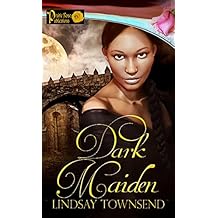In a
few days, doorbells across America will ring incessantly for one evening.
Adults inside the dwelling will answer the call, opening their doors. Charming
(usually) children dressed in costumes of various descriptions – and sometimes winter
coats - will greet them with expectant expressions and the familiar chant,
“Trick-or-Treat.” The youngsters will hold out open shopping bags,
pumpkin-shaped buckets or whatever vessel they have brought along to carry the
bounty they collect. The inhabitants of the home will offer candy, cookies,
fruit or even money, which the young callers will accept before quickly moving
on to the next mark.
Most of us have grown up with this
strange, commercially lucrative, but usually benign, Halloween tradition. But
did you know its roots go back to the Middle Ages?
It
all started in the eighth century when Pope Gregory III declared November 1 to
be All Saints Day. Derived from Old English, the word ‘Hallows’ means ‘Saints.’
The night before it was the traditional
night of Samhain in the Celtic religion. It came to be known
as All Hallows Eve and many Celtic traditions were incorporated into the
celebrations.
One of those traditional rituals was
dressing up as evil spirits at year’s end. The Celts believed that the dead and
the living overlapped at the change from one year to the next and that demons
roamed the earth during the transition. People dressed in costumes to trick the
demons into thinking the humans were also evil spirits and, consequently, would
not harm them. This practice moved to All Hallows Eve.
In England, this custom was incorporated
by poor people who would visit the homes of the wealthy where they would
promise to pray for the souls of the rich peoples’ dead relatives. As payment
for the promise, the poor received pastries known as ‘soul cakes,’ and the
practice became known as ‘souling.’
By the sixteenth century, young people in
Scotland and other parts of Britain and Ireland had taken up the practice of
donning costumes and moving from house to house. Instead of promising prayers,
they would briefly entertain whoever answered the door with a brief ‘trick’
such as reciting a poem or singing a short song in order to earn their
‘treats,’ which were usually nuts, fruits or coins. Sometimes the visitors
would threaten to inflict misfortune if they did not receive a treat. This
tradition became known as ‘guising.’
Over time, the term ‘All Hallows Eve’ was
shortened to ‘Halloween,’
In the 1840’s, large numbers of immigrants
fleeing the potato famine in Ireland helped to spread the celebration of
Halloween throughout the United States and by the early twentieth century the
practices of guising and souling were common in areas where Scottish and Irish people
had settled.
Unfortunately, by the 1920’s pranks such
as soaping windows and egging houses had become popular on Halloween. During
the Great Depression, these ‘tricks’ devolved into acts of vandalism such as
overturning outhouses and other property damage, physical assaults and other
violence. To counteract this problem, in the 1930s many communities organized
events in which costumed visitors would be given sweets by participating
homeowners during specific hours on Halloween night.
 |
| Photo by Jill Wellington via Pixabay |
The United States’ involvement in World
War II brought sugar rationing with it. This put a damper on the tradition as
there were few sweets to hand out. But after the war, the troops came home,
married, and initiated the baby boom. With it, Jack-O-Lanterns,
trick-or-treating and Halloween parties became extremely popular. Many costumes
of the time were homemade, but candy companies launched extensive national
advertising campaigns to popularize the holiday and eventually created smaller
versions of best-selling candies to take advantage of the lucrative market they
had created.
The tradition became prevalent throughout
the United States. The origin of the term ‘trick-or-treating’ is not well
documented, but in 1951 it appeared in a Peanuts comic strip and the next year
Disney released a Donald Duck cartoon called Trick or Treat.
In the years since,
the popularity of Halloween and demand for costumes, candy, decorations and
related items has continued to grow. The holiday is second only to Christmas in
dollars spent on the celebration. According to the National Retail Federation,
$8.05 billion was spent on Halloween in the U.S. in 2020—even in the throes of
the COVID pandemic. The Federation is predicting that spending this year (2022)
will reach $10.14 billion.
With expenditures that high, it’s hard to
determine whether the Halloween holiday is a Trick or a Treat.
Ann Markim
Buy Links: Paperback at Amazon Amazon print or digital















